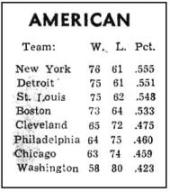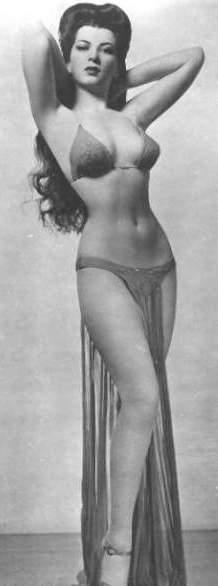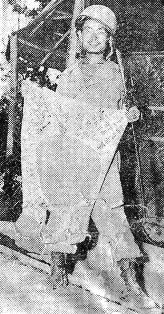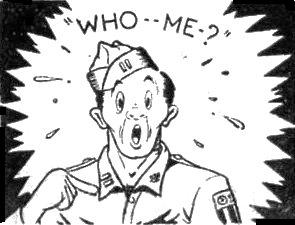Is the gateway to India at Bombay
Really as beautiful as they say?
Don't rightly know, Ma'am. Did my part
Breakin' point in the jungle's heart;
blasted the boulders, felled the trees
with red muck oozin' around our knees;
Carved the guts from the Patkai's side,
Dozed our trace, made it clean and wide,
Metalled and graded, dug and filled:
We had the Ledo Road to build.
Well, surely you saw a burning ghat,
Fakirs, rope tricks and all of that.
Reckon I didn't. But way up ahead
I tended the wounded, buried the dead.
For I was a Medic, and little we knew,
But the smell of sickness all day through,
Mosquitoes, leeches, and thick dark mud
Where the Chinese spilled their blood
After the enemy guns were stilled:
We had the Ledo Road to build.
|
Of course, you found the Taj Mahal,
The loveliest building of them all.
Can't really say, lady I was stuck
Far beyond Shing with a QM truck
Monsoon was rugged there, hot and wet,
Nothing to do but work and sweat
And dry was the dust upon my mouth
As steadily big "cats" roared on south,
Over this ground where Japs lay killed:
We had the Ledo Road to build.
You've been gone two years this spring,
Didn't you see a single thing?
Never saw much but the moon shine on
A Burmese temple around Maingkwan,
And silver transports high in the sky,
Thursday River and the swift Tanai,
And Hukawng Valley coming all green,
Those are the only sights I've seen.
Did our job, though, like God willed:
We had the Ledo Road to build.
|






 We quote the letter which accompanied the above contribution: "in the lonely reaches of Northern Assam, our
Army Airways Communications System unit opened its mail one morning to find this highly interesting pin-up of
Sherry Britton, N.Y. night club entertainer. We pass it on to the Roundup as our idea of what the post-war
world ought to be full of, accompanied by a polite note to the editor to 'make damned sure' we get it back."
We quote the letter which accompanied the above contribution: "in the lonely reaches of Northern Assam, our
Army Airways Communications System unit opened its mail one morning to find this highly interesting pin-up of
Sherry Britton, N.Y. night club entertainer. We pass it on to the Roundup as our idea of what the post-war
world ought to be full of, accompanied by a polite note to the editor to 'make damned sure' we get it back."
 Brig. Gen. Frank Merrill, former leader of the fabulous Marauders, chats with two Nisei, T/Sgts. Herbert Miyasaki,
left, and Akiji Yoshimura.
Brig. Gen. Frank Merrill, former leader of the fabulous Marauders, chats with two Nisei, T/Sgts. Herbert Miyasaki,
left, and Akiji Yoshimura.



